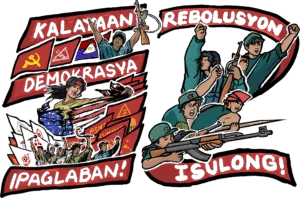
Coni K. Ledesma
Special Office for the Protection of Children
Human Rights Committee, NDFP
On April 24, 2012, the National Council of the National Democratic Front of the Philippines (NDFP) issued the document NDFP DECLARATION AND PROGRAM OF ACTION FOR THE RIGHTS, PROTECTION AND WELFARE OF CHILDREN.
The document affirms the rights of children and resolves to carry out a program of action for the protection and welfare of children within the framework of the Guide for Establishing the People’s Democratic Government (issued 1972) and the 1996 NDFP Unilateral Declaration of Undertaking to Apply the Geneva Conventions of 1949 and Protocol I of 1977, and in accordance with the principles and policies enunciated by the NDFP as well as with the just and applicable provisions of international conventions pertinent to the rights and welfare of children.
A team of international lawyers, members of the International Lawyers Advisory Team (ILAT) lent their expertise to assist the NDFP in forging the document.
In Article V Section 13 Program of Action of the said document, the NDFP states that it shall create and operationalize under its Human Rights Committee, a Special Office for the Protection of Children (SOPC).
Among the functions of this Office is to issue an annual report on the situation of children in the Philippines in relation to the armed conflict and on the activities to uphold, defend and promote the rights of children.

The Report for 2012-2016
In consultation with the Human Rights Committee of the NDFP, instead of an annual report, the SOPC is now publishing a report on the situation of children under the Presidency of Benigno Simeon Aquino.
The rationale for this is to see the situation of children, not on a yearly basis, but to see how the policies of a president during his term has affected children either positively or negatively.
It also shows how the revolutionary movement undertakes its work with children during a period of intense repressions, violatons of human rights and amid intense natural disasters.
This document is divided into three parts: first, an Overview, where the general situation of children is presented. Included in this part are the following: educational situation of children, child labor, child abuse, human trafficking and cyber pornography, children and disasters and children in conflict with the law (CICL).
The second part discusses the Situation of Children in Areas of Armed Conflict. And third, What the Revolutionary Movement has Done to Protect and Promote Children’s Rights.
The NDFP still has a lot of work to do to help develop the full potential of children within its area of responsibility. The challenge to undertake this work under militarized conditions continues through every presidential regime as long as the semicolonial and semifeudal system continues.
However, the NDFP is also inspired by the positive responses and development among the children as they are developed into responsible citizens of the Philippines.
